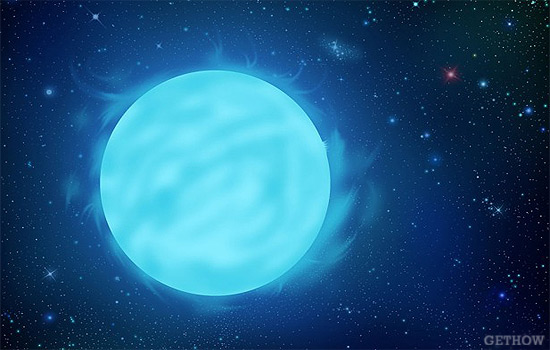Massive stars are none other than a big and giant stars. Massive stars have a mass at least three times that of the Sun and some are as massive as about 50 suns. It is just like a simple star with a great size than small stars. The every process of massive stars is bigger than the small stars and its reaction also emits a huge amount of light.
A massive star evolves in a similar way to a small star until it reaches the main sequence stage. During its life as a main sequence star, it shines steadily until the hydrogen in its core has fused to form helium. This process takes billions of years in small star, but only millions of years in a massive star.
A massive star then becomes a red supergiant, which initially consists of a helium core surrounded by outer layers of cooling, expanding gas. Over the next few million years, a series of nuclear reactions from different elements in shells starts around an iron core.
The core eventually is a reaction from different elements in shells around an iron core. The core eventually collapses in than a second, causing a massive explosion called a supernova, in which a shock wave blows away the outer layers of the star.
Supernova shines brighter than an entire galaxy for a short time. Sometimes, the core survives the supernova explosion. If the surviving core is between about one and a half three solar masses, it contracts to become a tiny, dense neutron star.
If the core is greater than three solar masses, it contracts to become a black hole.
These are all about massive stars of the universe.


